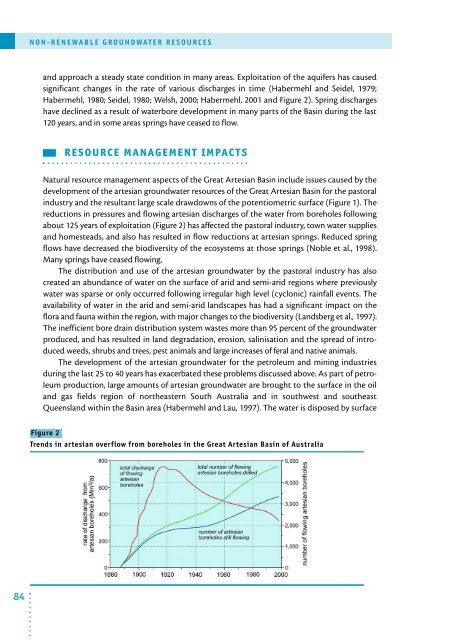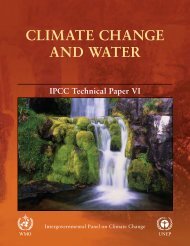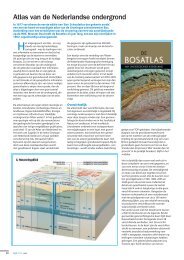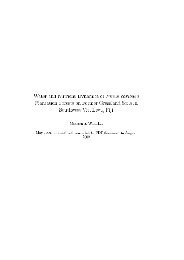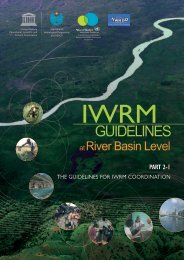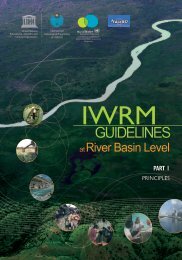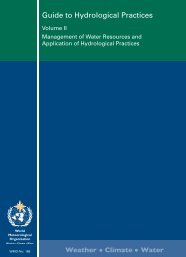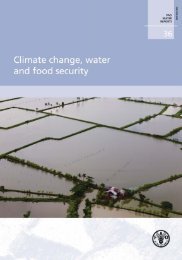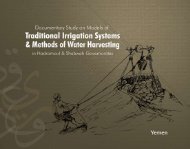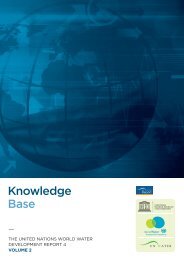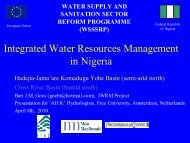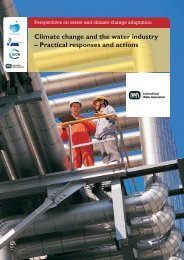Non-renewable groundwater resources: a ... - unesdoc - Unesco
Non-renewable groundwater resources: a ... - unesdoc - Unesco
Non-renewable groundwater resources: a ... - unesdoc - Unesco
- No tags were found...
Create successful ePaper yourself
Turn your PDF publications into a flip-book with our unique Google optimized e-Paper software.
NON-RENEWABLE GROUNDWATER RESOURCESand approach a steady state condition in many areas. Exploitation of the aquifers has causedsignificant changes in the rate of various discharges in time (Habermehl and Seidel, 1979;Habermehl, 1980; Seidel, 1980; Welsh, 2000; Habermehl, 2001 and Figure 2). Spring dischargeshave declined as a result of waterbore development in many parts of the Basin during the last120 years, and in some areas springs have ceased to flow.RESOURCE MANAGEMENT IMPACTSNatural resource management aspects of the Great Artesian Basin include issues caused by thedevelopment of the artesian <strong>groundwater</strong> <strong>resources</strong> of the Great Artesian Basin for the pastoralindustry and the resultant large scale drawdowns of the potentiometric surface (Figure 1). Thereductions in pressures and flowing artesian discharges of the water from boreholes followingabout 125 years of exploitation (Figure 2) has affected the pastoral industry, town water suppliesand homesteads, and also has resulted in flow reductions at artesian springs. Reduced springflows have decreased the biodiversity of the ecosystems at those springs (Noble et al., 1998).Many springs have ceased flowing.The distribution and use of the artesian <strong>groundwater</strong> by the pastoral industry has alsocreated an abundance of water on the surface of arid and semi-arid regions where previouslywater was sparse or only occurred following irregular high level (cyclonic) rainfall events. Theavailability of water in the arid and semi-arid landscapes has had a significant impact on theflora and fauna within the region, with major changes to the biodiversity (Landsberg et al., 1997).The inefficient bore drain distribution system wastes more than 95 percent of the <strong>groundwater</strong>produced, and has resulted in land degradation, erosion, salinisation and the spread of introducedweeds, shrubs and trees, pest animals and large increases of feral and native animals.The development of the artesian <strong>groundwater</strong> for the petroleum and mining industriesduring the last 25 to 40 years has exacerbated these problems discussed above. As part of petroleumproduction, large amounts of artesian <strong>groundwater</strong> are brought to the surface in the oiland gas fields region of northeastern South Australia and in southwest and southeastQueensland within the Basin area (Habermehl and Lau, 1997). The water is disposed by surfaceFigure 2Trends in artesian overflow from boreholes in the Great Artesian Basin of Australia84


